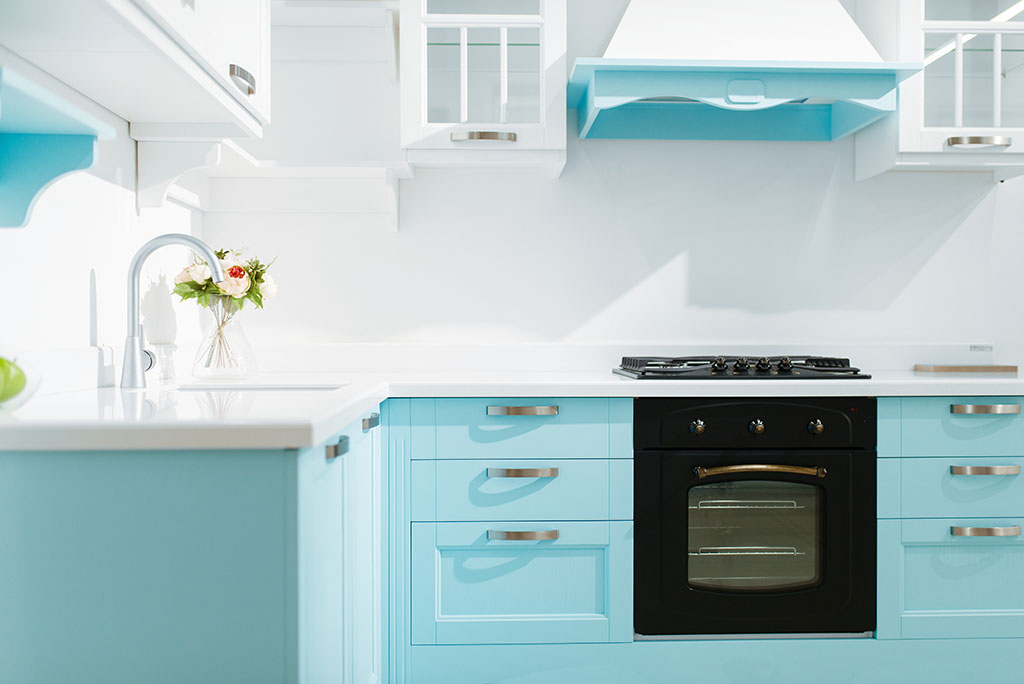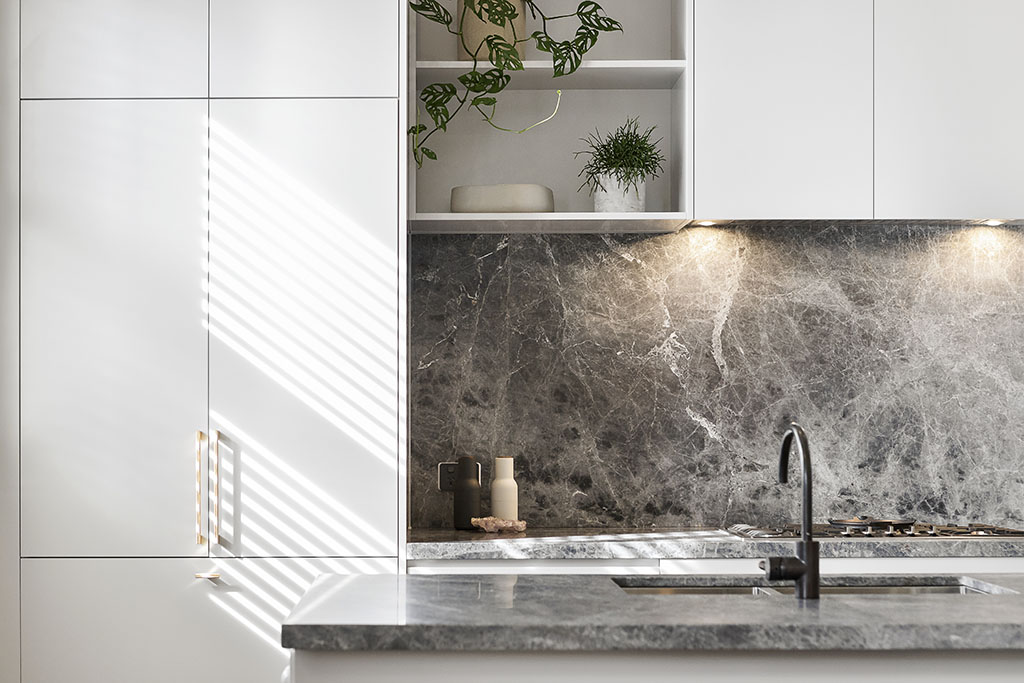Cabinet to Countertop: Finding the Perfect Cabinet Color Match

Creating a kitchen that’s not only functional but also visually appealing is a common design goal for many homeowners. One of the key elements in achieving this is finding the perfect color match between your cabinets and countertops. In this guide, we’ll delve into the art of crafting a harmonious kitchen aesthetic by exploring various ways to pair cabinet colors with countertop options. Get ready to discover the secrets of color coordination in the heart of your home!
Bold Contrasts – Making a Statement

Designing your kitchen with contrasting cabinet and countertop colors can be a powerful way to make a bold and striking statement. It’s an approach that infuses character and personality into your kitchen while creating a visually stimulating environment. Here’s how you can achieve this design choice:
1. Choosing Contrasting Colors:
The heart of this design strategy is selecting cabinet and countertop colors that are on opposite ends of the color spectrum. For instance, a dark cabinet color paired with a light countertop or vice versa. This stark contrast is what creates the visual impact.
2. Balancing the Intensity:
While the aim is to create drama, it’s crucial to strike a balance between the contrasting colors. One element should not overpower the other; they should coexist harmoniously. For example, you might have dark kitchen cabinets paired with light granite countertops. This combination provides contrast without making the space feel too heavy.
3. Harmonizing Accessories:
To maintain a cohesive look, consider using accessories like cabinet hardware, light fixtures, or a backsplash that combines both contrasting colors. These elements act as a bridge, connecting the cabinet and countertop colors and unifying the overall design.
4. Texture and Finish:
Incorporating texture is another way to add depth and balance in a contrasting kitchen. For instance, you can choose countertops with a textured finish that complements the cabinet color. Additionally, selecting a matte finish for cabinets can create an elegant contrast with a glossy countertop.
5. Focal Point Creation:
The contrasting colors can help establish a focal point in your kitchen. Whether it’s the dark kitchen island against light countertops or a bold backsplash, it’s a design strategy that draws attention and adds character.
6. Integration of a Third Color:
Sometimes, adding a third color to the mix can enhance the overall look. This could be through decor items, small appliances, or even a colorful runner or rug. A pop of a third color can introduce a more dynamic visual appeal.
Designing a kitchen with contrasting cabinet and countertop colors is an adventurous choice, perfect for those who want their kitchen to be a unique and expressive space. It’s a statement of individuality that captures attention and adds a touch of vibrancy to the heart of your home.
Playing with Patterns – Backsplash as the Bridge

In the realm of kitchen design, the backsplash serves as more than just a practical element for protecting your walls from splatters and stains. It’s a canvas for color and pattern that can bridge the visual gap between your kitchen cabinets and countertops. Here’s how you can leverage your backsplash to harmonize contrasting cabinet and countertop colors and bring your kitchen aesthetic to life:
1. The Bridge of Continuity:
A well-chosen backsplash can create a visual connection between your cabinets and countertops. It acts as a bridge, pulling the two elements together into a unified design scheme.
2. Cohesive Color Palette:
One way to use the backsplash is by selecting colors from both the cabinet and countertop shades, harmonizing them in a pattern or design. For instance, if you have light gray cabinets and dark granite countertops, a backsplash featuring both those colors can be an ideal bridge.
3. Pattern Play:
Patterns can bring visual intrigue to your kitchen. Geometric patterns, herringbone, or subway tiles with an alternating color scheme can create an appealing transition between your cabinet and countertop colors.
4. Focal Point Creation:
The backsplash often serves as a focal point in the kitchen. You can use this to your advantage by selecting a visually striking backsplash that ties the contrasting colors together. Think of a bold pattern or a vibrant mosaic that contains elements of both cabinet and countertop colors.
5. Tonal Harmony:
If you prefer a more subtle approach, consider selecting a backsplash in a neutral tone that complements both the cabinets and countertops. This ensures a harmonious look without introducing any drastic color changes.
6. Texture and Finish:
The texture of the backsplash material can also play a role in uniting contrasting elements. For instance, if your cabinets are glossy and your countertops are matte, a textured backsplash can bring these features together seamlessly.
7. Customization:
If you have a unique vision for your kitchen, consider customizing your backsplash. This allows you to play with patterns, colors, and materials to create a truly one-of-a-kind bridge between your cabinets and countertops.
A well-designed backsplash can be a game-changer in your kitchen’s aesthetic. It not only ties together contrasting cabinet and countertop colors but also acts as a platform for creative expression. By thoughtfully selecting patterns, colors, and textures for your backsplash, you can achieve a harmonious and visually captivating kitchen design that reflects your unique style.

CONTACT GLOBAL STONE TODAY!
The kitchen is more than just a place for preparing food; it’s where memories are born, conversations flow, and life unfolds. Therefore, design a kitchen that not only excels in functionality but also delights in aesthetic charm. By crafting a harmonious palette, your kitchen can become something special, a reflection of your personal style, and a warmhearted center of your home.
Your vision, your style, your perfect kitchen.
